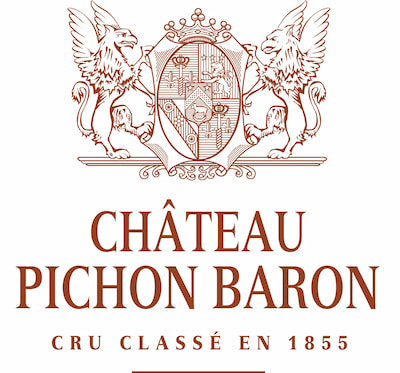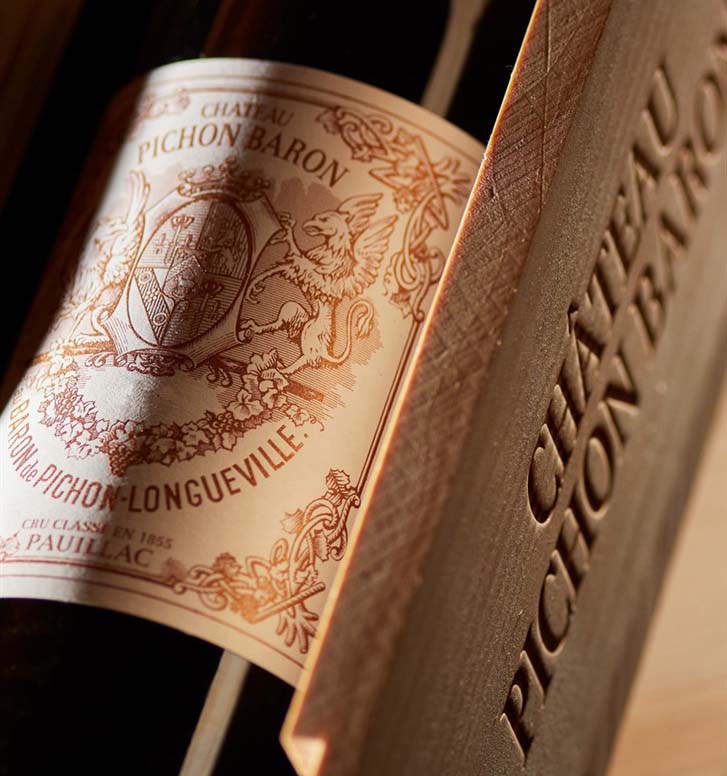|
You are using an insecure Internet browser
Navigateur internet non sécurisé
您在使用不安全的网页浏览器。
|
||
|
We have noticed that you are using Internet Explorer which is an outdated and insecure Internet browser. Please use one of the browsers below for a safe and optimal experience on our website.
Nous avons remarqué que vous utilisez Internet Explorer, qui est un navigateur internet obsolète et non sécurisé. Nous vous recommandons d’utiliser à la place l’un des navigateurs ci-dessous pour une expérience sûre et optimale sur notre site.
我们注意到您使用的Internet Explorer是过时且不安全的网页浏览器。请使用以下任一浏览器,在我们的网站上获得安全及最佳体验。
|
||
| Edge | Firefox | Chrome |

Nowadays it produces wine of a quality approaching that of its neighbour Château Latour. This second growth in Pauillac has become one of AXA Millésimes star properties since they bought it in 1987.

Château Pichon Baron was originally a farmhouse called La Baderne. The wine was brought into production in the 17th century by Jacques de Pichon, Baron of Longueville, and quickly gained an excellent reputation. The château today, known for its witch-hat turrets and traditional fairytale castle appearance, was built by Raoul de Pichon-Longueville in 1851, and the wine was awarded second growth quality in the 1855 classification. The estate was once whole, but split between siblings – Raoul and Virginie – under Napoleonic laws, when Baron Joseph de Pichon-Longueville died in 1850. Raoul’s part became Pichon-Longueville Baron (Pichon Baron) while Virginie’s became Pichon-Longueville-Comtesse de Lalande (Pichon Lalande). Pichon Baron remained in the Pichon-Longueville family until 1933, when it was sold to the Bouteilliers.

After half a century in the ownership of the Bouteillier family, Pichon Baron was acquired by AXA Millésimes in 1987. AXA Millésimes already includes a string of leading Bordeaux châteaux, such as Château Petit-Village and Château Suduiraut, and also owns an estate in Portugal – Quinta do Noval – and in Hungary’s Tokaj region, Disznóko. The property was run by Jean-Michel Cazes until he took retirement in 2000, and since then Christian Seely has been in charge, with Jean-René Matignon as their technical director.
The Château Pichon Baron vineyards cover 73 hectares of gravely soil, to the south of Pauillac. Since 2001 the selection policy applied in the vineyard and in the winery has been stepped up considerably, concentrating on the historic terroir of Pichon Baron (only 40 hectares used for the First Wine), the quintessence of the vineyard.
Soon after AXA had bought the property, they had a new, circular winery built, using a design by architects Patrick Dillon and Jean de Gastines. The cellars themselves extend beneath the pool in front of the château, the cool waters above helping to moderate the temperature below.

© 2024 Copyright – Le Club FICOFI® | Design by OLC
This website uses cookies to ensure you get the best experience on our website as specified in our Cookie Policy. You can consent to the use of such technologies by clicking on “I agree”.